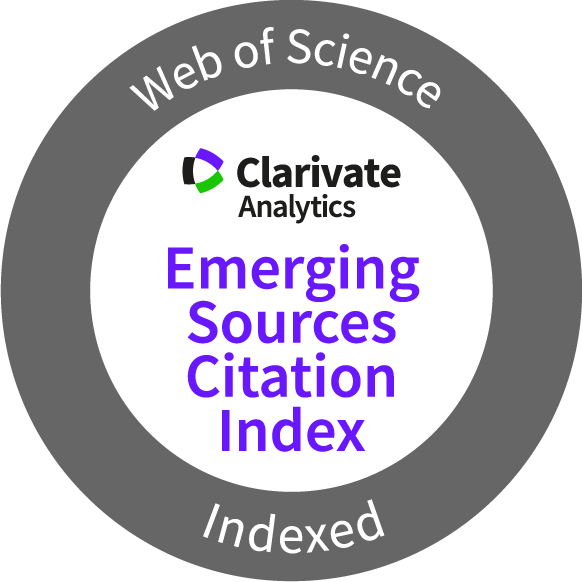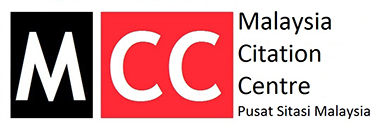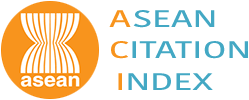Improving The Sporulation of Eimeria tenella Oocysts Purified From Chicken Faeces
Keywords:
Eimeria tenella, Magneto base method, Oocysts, SporulationAbstract
Coccidiosis is a major and recurrent intestinal disease in the chicken industry caused mainly by Eimeria tenella and it is the best-known and most economically significant species in poultry. Oocyst purification is a common and critically important method used for the study of Eimeria species. Various methods have been used for the purification of coccidia oocysts. However, no study has outlined the most effective method for increasing the sporulation of Eimeria tenella oocysts. Thus, the study compared and validated the applications of the three common oocyst sporulation methods, viz: (i) forced aeration without a shaker, (ii) forced aeration in combination with a shaker, and (iii) magneto base without forced aeration. A total of 9 individual 21-day-old broiler chickens were inoculated individually with a single 1 mL dose containing 2000 Eimeria tenella oocysts via oral gavage. Water and food were provided ad libitum throughout the experimental period. Pooled group faecal samples were collected on the 7 day post-infection. The average (range) number of sporulated oocysts counts for the forced aeration without shaking was 2250 (1000-2000), forced aeration in combination with shaking was 2000 (1000-1500), and the magneto base without forced aeration was 5500 (2000-3500). The results from the study indicated that the magneto base without forced aeration was the most effective method for enhancing the sporulation of Eimeria tenella oocysts.
Downloads
Metrics
References
Abd-ELrahman, S. M., Mohamed, S. A. A., Mohamed, S. E., El-Khadragy, M. F., Dyab, A. K., Hamad, N., Safwat, M.M., Nasr, A.A.E., Alkhaldi, A.A.M., Gareh, A. & Elmahallawy, E.K. 2022. Comparative effect of allicin and alcoholic garlic extract on the morphology and infectivity of Eimeria tenella oocysts in chickens. Animals, 12(22): 3185. DOI: https://doi.org/10.3390/ani12223185
Aljedaie, M.M. & Al-Malki, E.S. 2020. Anticoccidial activities of Salvadora persica (arak), Zingiber officinale (ginger) and Curcuma longa (turmeric) extracts on the control of chicken coccidiosis. Journal of King Saud University - Science, 32(6): 2810–2817. DOI: https://doi.org/10.1016/j.jksus.2020.07.002
Al-Quraishy, S., Abdel-Baki, A.S. & Dkhil, M.A. 2009. Eimeria tenella infection among broiler chicks Gallus domesticus in Riyadh city, Saudi Arabia. Journal of King Saud University - Science, 21(3): 191–193. DOI: https://doi.org/10.1016/j.jksus.2009.10.006
Chengat Prakashbabu, B., Thenmozhi, V., Limon, G., Kundu, K., Kumar, S., Garg, R., Clark, E.L., Srinivasa Rao, A.S.R., Raj, D.G., Raman, M., Banerjee, P.S., Tomley, F. M., Guitian, J. & Blake, D.P. 2017. Eimeria species occurrence varies between geographic regions and poultry production systems and may influence parasite genetic diversity. Veterinary Parasitology, 233: 62–72. DOI: https://doi.org/10.1016/j.vetpar.2016.12.003
Choi, J., Ko, H., Tompkins, Y.H., Teng, P.Y., Lourenco, J.M., Callaway, T.R. & Kim, W. K. 2021. Effects of Eimeria tenella infection on key parameters for feed efficiency in broiler chickens. Animals, 11(12): 3428. DOI: https://doi.org/10.3390/ani11123428
Choi, J., Goo, D., Sharma, M.K., Ko, H., Liu, G., Paneru, D., Choppa, V.S.R., Lee, J. & Kim, W.K. 2023. Effects of Different Eimeria inoculation doses on growth performance, daily feed intake, gut health, gut microbiota, foot pad dermatitis, and Eimeria gene expression in broilers raised in floor pens for 35 Days. Animals, 13(13): 2237. DOI: https://doi.org/10.3390/ani13132237
Elmahallawy, E.K., Fehaid, A., EL-shewehy, D.M.M., Ramez, A.M., Alkhaldi, A.A.M., Mady, R., Nasr, N.E., Arafat, N., Hassanen, E.A.A., Alsharif, K.F. & Abdo, W. 2022. S-Methylcysteine ameliorates the intestinal damage induced by Eimeria tenella infection via targeting oxidative stress and inflammatory modulators. Frontiers In Veterinary Science, 8: 1-14. DOI: https://doi.org/10.3389/fvets.2021.754991
Gugsa Amede, G., Abebe, E., & Gugsa, G. 2018. A review on poultry coccidiosis. Abyssinia Journal of Science and Technology, 3(1): 1–12.
Guimaraes, Jr., L.H.S., Terenzi, H.F., Polizeli, M.L.T.M. & Jorge, J.A. 2007. Production and characterization of a thermostable extracellular B-D-fructofuranosidase produced by Aspergillus ochraceus with agroindustrial residues as carbon sources. Enzyme and Microbial Technology, 42: 52-57. DOI: https://doi.org/10.1016/j.enzmictec.2007.07.021
Hagag, D., El-Shazly, K., El-Aziz, M. A., El-Latif, A. A., El-Sharkaway, H., Abdo, W. & Barakat, M. 2020. Assessment of anticoccidial efficacy of novel triazine compound and sulfaclozine against experimentally induced caecal coccidiosis in broiler chickens. Sains Malaysiana, 49(11): 2637–2648. DOI: https://doi.org/10.17576/jsm-2020-4911-03
Hofmann, J. & Raether, W. 1990. Improved techniques for the in vitro cultivation of Eimeria tenella in primary chick kidney cells. Parasitology Research, 76(6): 479-486. DOI: https://doi.org/10.1007/BF00931053
Loo, S. S., Mohamed, M., Mohd-Taib, F. S., Khoo, C.K. & Wan, K.L. 2022. Isolation and establishment of Eimeria tenella populations from local broiler chicken farms. Sains Malaysiana, 51(6): 1677–1686. DOI: https://doi.org/10.17576/jsm-2022-5106-06
Madlala, T., Okpeku, M. & Adeleke, M.A. 2021. Understanding the interactions between Eimeria infection and gut microbiota, towards the control of chicken coccidiosis: A review. Parasite, 28: 48. DOI: https://doi.org/10.1051/parasite/2021047
Mesa-Pineda, C., Navarro-Ruíz, J.L., López-Osorio, S., Chaparro-Gutiérrez, J.J. & Gómez-Osorio, L.M. 2021. Chicken Coccidiosis: from the parasite lifecycle to control of the disease. Frontiers In Veterinary Science, 21(8): 1-15. DOI: https://doi.org/10.3389/fvets.2021.787653
Nguyen, B.T., Flores, R.A., Cammayo, P.L.T., Kim, S., Kim, W.H. & Min, W. 2021. Anticoccidial activity of berberine against Eimeria-infected chickens. Korean Journal of Parasitology, 59(4): 403–408. DOI: https://doi.org/10.3347/kjp.2021.59.4.403
Rentería-Solís, Z., Zhang, R., Taha, S. & Daugschies, A. 2020. A modified method for purification of Eimeria tenella sporozoites. Parasitology Research, 119(4): 1429-1432. DOI: https://doi.org/10.1007/s00436-020-06602-w
Répérant, J. M., Thomas-Hénaff M., Benoit, C., Le Bihannic, P. & Eterradossi, N. 2021. The impact of maturity on the ability of Eimeria acervulina and Eimeria meleagrimitis oocysts to sporulate. Parasite, 28(32): 1-7. DOI: https://doi.org/10.1051/parasite/2021031
Venkateswara, R.P., Raman, M. & Gomathinayagam, S. 2015. Sporulation dynamics of poultry Eimeria oocysts in Chennai. Journal of Parasitic Diseases, 39(4): 689-692. DOI: https://doi.org/10.1007/s12639-013-0403-5
Waldenstedt, L., Elwinger, K., Lundén, A., Thebo, P. & Uggla, A. 2001. Sporulation of Eimeria maxima oocysts in litter with different moisture contents. Poultry Science, 80(10): 1412-1415. DOI: https://doi.org/10.1093/ps/80.10.1412
Published
How to Cite
Issue
Section
Any reproduction of figures, tables and illustrations must obtain written permission from the Chief Editor (wicki@ukm.edu.my). No part of the journal may be reproduced without the editor’s permission
Funding data
-
Universiti Putra Malaysia
Grant numbers GP-IPS/2023/9776100 -
Ministry of Higher Education, Malaysia
Grant numbers (FRGS/1/2020/SKK0/UPM/02/15)




















